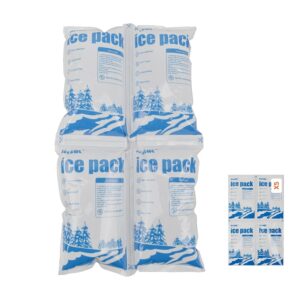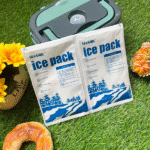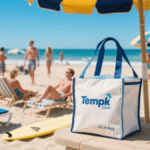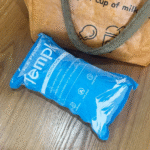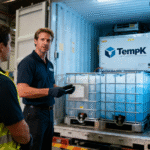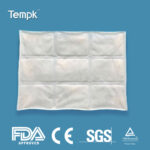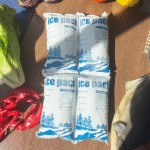Diperbarui: Agustus 18, 2025
Pelet es kering dalam ukuran kemasan adalah pendorong tercepat Anda untuk mencapai waktu penahanan target dan lulus audit. Yang pertama 50 kata-kata: pelet es kering dalam ukuran kemasan harus disesuaikan dengan durasi jalur, sensitivitas muatan, dan aturan operator terbaru. Rencanakan 5–10 pon per 24 jam, pilih diameter pelet untuk kecepatan vs. ketahanan, dan selalu beri label UN1845 dengan kemasan berventilasi.
-
Bagaimana pelet es kering dalam ukuran kemasan memetakan jalur 24–72 jam dengan kata kunci perencanaan ekor panjang
-
Bagaimana cara menghitung berapa banyak es kering per 24 jam dengan rumus salin-tempel dan pemilih
-
Apa Pelabelan es kering UN1845 Dan 2025 batasan udara/surat diperlukan dalam praktiknya
-
Kapan 3 perubahan pelet mm vs 10–16 mm tahan waktu dan kebutuhan ventilasi
-
Di mana mencari sumbernya pelet es kering dalam ukuran kemasan dari 10 lb tas ke 1,400 lb tas jinjing
Pelet es kering dalam ukuran kemasan mana yang paling sesuai dengan jalur Anda?
Jawaban singkat: Pilih pelet es kering dalam ukuran kemasan berdasarkan jam jalur terlebih dahulu, kemudian diameter pelet. Pelet kecil paling cepat dingin tetapi lebih cepat memudar; pelet yang lebih besar bertahan lebih lama dengan berat yang sama. Gunakan 5–10 lb per 24 jam sebagai batas waktu Anda dan tambahkan satu hari tambahan buffer untuk penundaan. Hal ini sejalan dengan 2025 panduan perencanaan operator.
Mengapa ini berhasil: Pelet yang lebih kecil (≈3mm) mempunyai luas permukaan yang lebih besar, jadi mereka menyublim lebih cepat dan membutuhkan lebih banyak berat per hari. Pelet standar/besar (≈10–16mm) tukar sedikit kecepatan untuk daya tahan lebih lama. Anda juga bisa mencampur: yang tipis 3 mm lapisan “starter” untuk pull‑down, dengan pelet 10–16 mm untuk fase jelajah. Operator sebenarnya melihat lebih lama, pegangan yang lebih stabil ketika diukur berdasarkan waktu transit terlebih dahulu, lalu sesuaikan diameter pelet untuk sensitivitas produk.
3 mm vs 16 mm pelet es kering: apa yang sebenarnya berubah?
Tahan waktu dan ventilasi. 3 pelet mm memberikan pendinginan yang cepat dan cakupan yang merata tetapi menyublim paling cepat, meningkatkan pelepasan CO₂ dan melepaskan permintaan. 10Pelet –16 mm bertahan lebih lama per pon, mengurangi top-up di tengah rute. Untuk ruang kosong yang cepat sebelum dingin atau sempit, 3 mm berfungsi dengan baik; untuk jalur 48–72 jam, pelet standar/besar cenderung unggul dalam hal ketahanan.
| Panduan pilihan paket | Diameter khas | Ukuran paket tipikal | Apa artinya bagimu |
|---|---|---|---|
| Pelet “Beras”. | ~3mm | 10 tas pon; 10 kotak kg | Pull -down cepat; rencana +20–30% berat/hari; lebih banyak ventilasi. |
| Pelet standar | ~12–19 mm | 20–50 pon tas | Penyimpanan lebih lama dengan isi ulang lebih sedikit untuk pengiriman makanan/lab. |
| Pelet/tongkat besar | 10–16 mm | 200– Tas jinjing 600 pon; ~1,400 pon tempat sampah | Terbaik untuk pengangkutan beberapa hari dan pementasan massal; tingkat kerugian yang stabil. |
Tips praktis yang dapat Anda gunakan sekarang
-
Muatan hangat? Mulailah dengan yang tipis 3 lapisan mm di atas/bawah, lalu isi dengan 10–16 mm.
-
Pintu sering terbuka? Tambahkan ~20% ke pon harian atau tingkatkan ukuran pelet.
-
Pengirim sekali sentuh? Pra -belukar liner; itu bisa menghemat beberapa pon per hari.
Hasil lapangan: Pengirim vaksin beralih dari 3 pelet mm hingga ~10 mm dan menambahkan buffer 24 jam. Pendingin dan rute yang sama; klaim turun karena waktu tunggu meningkat sekitar satu hari.
Berapa banyak pelet es kering dalam ukuran kemasan yang Anda perlukan per 24 jam?
Jawaban Langsung: Mulai 5–10 lb per 24 jam untuk pengirim terisolasi kecil/menengah. Miringkan ke arah 10 lb/hari untuk jalur panas atau 3 mm pelet; ke arah 5 lb/hari untuk pelet 10–16 mm dan pengirim yang efisien. Selalu tambahkan satu hari ekstra es kering sebagai penyangga.
Penjelasan: Kisaran tersebut mencerminkan energi perubahan fase es kering dan kehilangan paket pada umumnya. Volume, ketebalan dinding, isi kosong, dan menangani (terbuka) menggerakkan Anda ke atas atau ke bawah. Jika suhu jalur Anda lebih panas dari 30°C (86 ° f), ketentuan yang berlebihan. Jika kotak Anda terbuat dari EPS/VIP tebal dengan rongga yang rapat, kamu bisa memangkas. Lacak pengiriman sebenarnya dengan logger dan sesuaikan baseline Anda setelah satu percobaan.
Kalkulator copy -pasta (lbs)
Pemilih dua menit
-
Waktu transit: ≤24 jam → ~10 pon; 24–48 jam → ~20 pon; 48–72 jam → 30–40 pon.
-
Diameter pelet: 3 mm → tambahkan 20–30%; 10–16 mm → kecepatan dasar.
-
Penanganan: Dinding tipis/sering terbuka → +20%; busa tebal/sekali sentuh → tidak ada perubahan.
Pelet es kering dalam ukuran kemasan untuk pengiriman yang diatur—apa yang diwajibkan 2025?
Jawaban Langsung: Tanda “Es kering” atau “karbon dioksida, padat,” “UN1845,” berat bersih (kg), dan pengirim/penerima barang di kotak luar. Menggunakan ventilasi kemasan. Surat udara ≤5 lb per potong (domestik) tetap menjadi tutupnya; maskapai penerbangan menerapkan IATA PI 954 dan daftar periksa penerimaan. Bagasi penumpang diperbolehkan ≤2,5kg dengan persetujuan maskapai.
Blok label (tempelkan pada kotak):
-
Es kering / KARBON DIOKSIDA, PADAT
-
UN1845
-
JARING ES KERING WT: __kg
-
Pengirim + Penerima barang (nama/alamat)
Udara, surat, dan sekilas batasan penumpang
-
Ini kargo: Pi 954; UN1845 + Kg net; kemasan ventilasi; batasan operator mungkin berlaku.
-
USPS AIR (domestik): ≤5 pon per surat; Dilarang Internasional; wadah berventilasi.
-
Penumpang: ≤2,5kg (5.5 lb) per orang dengan persetujuan; Paket harus melampiaskan.
Tempat membeli pelet es kering dalam ukuran kemasan (10–1.400 pon)?
Pengecer & depot: 10–Kantong seberat 50 pon adalah hal yang umum untuk makanan DTC, laboratorium, dan acara. Industri: 200– Tas jinjing 600 pon (Kelas HR11/Cardibox) dan wadah ~1.400 pon yang mendukung pembangkit listrik dan DC. Rencanakan area pementasan yang berventilasi dan alarm CO₂ sederhana. Hubungi dulu untuk diameter pelet dan format potongan.
| Saluran | Ukuran paket tipikal | Bagus untuk | Apa artinya bagimu |
|---|---|---|---|
| Es kelontong/pesta | 1–10 lb. | Pengiriman satu kali saja, demo | Ukuran dan kesegaran pelet yang nyaman namun bervariasi. |
| Gudang es kering | 10, 20, 50 lb | e-com UKM, laboratorium | Mintalah 6 mm atau 12–19 mm berdasarkan panjang jalur. |
| Pemasok industri | 200– Tas jinjing 600 pon; ~1,400 pon tempat sampah | Penggunaan tanaman sehari-hari | Ekonomi unit terbaik; jadwal turun mendekati waktu penggunaan. |
Keamanan, Co₂, dan dasar-dasar ventilasi yang tidak boleh Anda lewati
-
Tidak pernah segel es kering dalam wadah kedap udara; selalu menyediakan jalur ventilasi.
-
Perlakukan van, lemari, dan walk‑in sebagai ruang terbatas; gunakan kipas angin dan monitor dasar.
-
Ikuti panduan paparan CO₂: 5,000 PPM TWA Dan 30,000 PPM Stel.
-
Buka tas jinjing secara perlahan; menjauh dari bulu-bulu itu. Latih tim tentang keselamatan menggunakan sarung tangan dan wajah.
Konversi cepat: Pound ke kilogram untuk label = lb ÷ 2.2046 → dibulatkan ke satu tempat desimal.
2025 tren pelet es kering dalam ukuran kemasan dan logistik rantai dingin
Tinjauan Tren: Peralatan dan kepatuhan sudah matang, sementara pasokan tetap bersifat regional. Operator disimpan UN1845 aturan penandaan stabil untuk 2025 dengan daftar periksa yang diperbarui. USPS masih membatasi pengiriman surat udara domestik ≤5 lb. Penangkapan CO₂ dan peralihan pasokan regional dapat memperketat ketersediaan; pesan mendekati tanggal penggunaan dan validasi jalur Anda dengan logger.
Perkembangan terbaru sekilas
-
Pembersih 2025 daftar periksa penerimaan dari operator besar; aturan inti yang sama, bentuk yang lebih jelas.
-
Kejelasan pemasok pada kelompok pelet berdasarkan diameter meningkatkan pencocokan lintas vendor.
-
Tempat sampah skala tanaman (≈1.400 pon) tetap umum untuk DC; standardisasi memudahkan pengisian ulang.
Wawasan pasar: Pertumbuhan sektor pangan dan farmasi menopang permintaan es kering pada tingkat menengah hingga tinggi 2032. Harapkan armada campuran—es kering untuk jalur beku; PCM dan VIP untuk program penyimpanan dan penggunaan kembali suhu 2–8°C yang presisi.
FAQ
Berapa lama pelet es kering dalam ukuran kemasan akan bertahan dalam pendingin?
Rencana 5–10 lb per 24 jam dan tambahkan a 24penyangga ‑jam. Gunakan pelet yang lebih besar untuk jangka waktu yang lebih lama.
Berapa diameter pelet yang harus saya pilih untuk pengiriman 48 jam?
Lebih menyukai 10–16 mm pelet. Mereka menukar kecepatan dengan daya tahan dan mengurangi titik kontak di tengah rute.
Bisakah saya mengirim tanpa pernyataan barang berbahaya?
Seringkali ya untuk UN1845 es kering saat menggunakan daftar periksa penerimaan; Anda tetap harus menandai kg bersih dan kemasan ventilasi.
Apa yang perlu ditunjukkan oleh label saya?
“Es kering/karbon dioksida, padat,” UN1845, Berat bersih (kg), dan detail pengirim/penerima di bagian luar.
Apakah es kering aman untuk makanan?
Jika diproduksi dari CO₂ tingkat makanan/minuman, Ya. Beli dari pemasok terkemuka dan ikuti SOP penanganan.
Ringkasan & Rekomendasi
Kesimpulan besar: Cocok pelet es kering dalam ukuran kemasan ke durasi jalur terlebih dahulu. Menggunakan 5–10 lb per 24 jam dan tambahkan buffer satu hari. Memilih 3 mm untuk pull‑down cepat dan 10–16 mm untuk daya tahan. Beri label dengan benar (UN1845, Kg net) dan simpan kemasannya ventilasi. Tas jinjing panggung di ruang berventilasi dengan peringatan CO₂.
Rencana aksi:
-
Tentukan jam jalur (≤24, 24–48, 48–72 jam).
-
Pilih diameter pelet untuk kecepatan vs. ketahanan.
-
Gunakan kalkulator, lalu bulatkan untuk buffer.
-
Cetak blok label dan latih tim Anda.
-
Catat satu pengiriman percontohan dan sesuaikan resepnya.
CTA: Perlu validasi jalur demi jalur dan SOP? Pesan konsultasi dengan Tempk untuk mendapatkan kalkulator, label UN1845 yang sudah dicetak sebelumnya, dan templat paket yang diuji.
Tentang tempk
Kami adalah tim teknik rantai dingin yang berfokus pada praktik, desain termal yang sesuai. Kami memetakan jalur Anda, ukuran pelet es kering dalam ukuran kemasan untuk durasi dan kubus, dan menyediakan SOP dan label yang divalidasi. Pelanggan memotong biaya klaim dan pengiriman ulang menggunakan templat paket dan log kinerja kami yang diberi stempel waktu.






